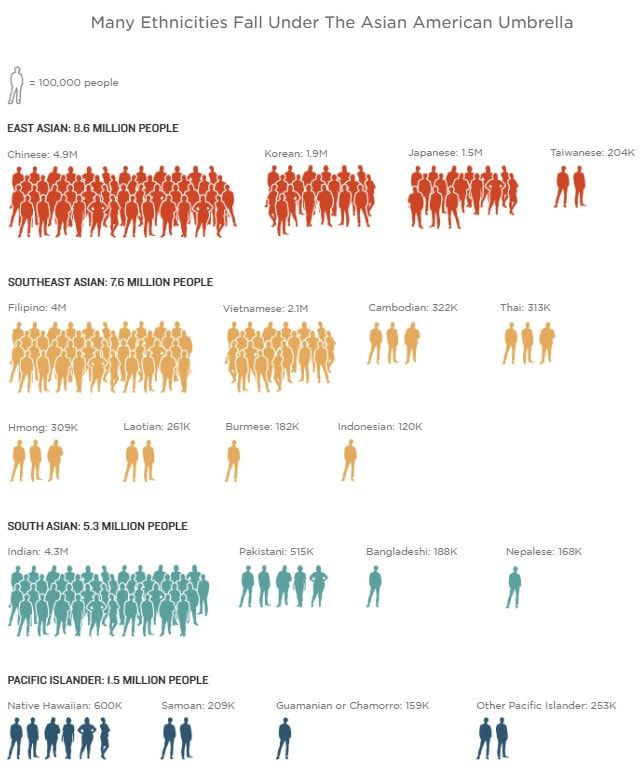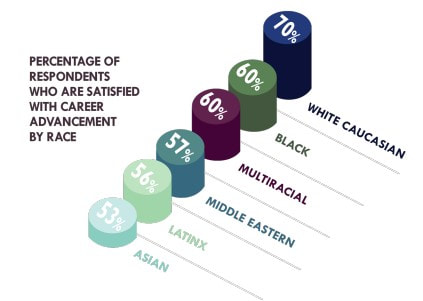|
As we near the end of the year and many companies are undergoing their annual review processes, we would like to share some tips on how managers and employees can be prepared and make the most of these meetings:
For employees:
Additionally, with the midterm elections coming up, we would like to share some non-partisan resources for making an informed vote: When and where to vote:
Non-Partisan Voting Guides: CA Secretary of State website—voting guide with summaries of all the propositions, candidates, and justices. https://voterguide.sos.ca.gov/ CAL Matters—a more detailed voter guide, with candidate qualifications and stances, plus descriptions of the many propositions on the ballot https://calmatters.org/california-voter-guide-2022/ Voter’s Edge—Type in your address and find specific ballot information for your area. You can also save your choices as you go to make filling out your ballot easier! https://votersedge.org/ca October 15th marks the end of Hispanic Heritage Month, which started on September 15th. This month we would like to highlight the SF Bay Area chapter of the Society of Hispanic Professional Engineers (SHPE). SHPE is a nationwide organization that supports Hispanic students and professionals to realize their full potential and positively impact the world through STEM. They run mentorship programs, organize trainings and other events, and have created a wide-reaching network to support their membership, which includes high school students in SHPE Jr. chapters, college students, and professionals.
SHPE also has a repository of research pertaining to Hispanic people in STEM from well-established organizations, which is an excellent resource for those interested in data regarding Hispanic representation in STEM fields. Some takeaways include:
Welcome back to the DEI Spotlight! After a short break, we are excited to continue sharing engineering-related DEI content with you, and hopefully with your input! This year, we would like to introduce a “DEI Spotlight: Industry Edition” every few months to make this space more relatable to our everyday experiences. Has your office held an unconscious bias training that you found to be helpful? Have you recently introduced the company-wide use of pronouns in your email signature? Is your firm making an effort to reduce biases in your hiring practices? Write to [email protected] and tell us how it is going and the results that you have seen; we will share them here with your permission!
Additionally, SE3 has had a strong start to the year, hosting the first session of a two-part seminar series called “Engineering Inclusive Engineers” on August 10th. Yvette Pearson, with the PEER Group, led the group through the foundation of JEDI (justice, equity, diversity, and inclusion) efforts and how they relate to the engineering workplace. The second session, “Identifying and Disrupting Systemic Inequities in Engineering Organizations,” will be held on September 14th; you can still register for it here. These sessions are geared towards “DEI beginners”, so please share them within your organizations to anyone who may be interested! On June 16th, SEAONC SE3 will be hosting their first symposium in over 3 years! The theme this year is “The Past, Present, and Future of DEI in Structural Engineering.” We will highlight the committee’s previous work (including being the founding SE3 chapter and beginning the national survey), what the committee has done in the past couple of years, and explore some of the many avenues that both SE3 and the structural engineering community at large can focus on in the near future.
There will be a keynote presentation by SE3 founders and past chairs, followed by a session on the research that the SEAONC SE3 chapter has done over the past 3 years. Breakout sessions will include topics such as:
Additionally, a workshop will be held by the PEER Group on how to be an active ally in the workplace and there will be a panel discussion with the firm leaders who took part in the DEI Cohort program from 2021-2022. Attending the symposium will make clear why SE3’s work, and DEI in general, should be of interest to absolutely everybody in the industry: because it touches everything that we do as structural engineers. You can learn more about the symposium and register here. We would also like to wish everyone celebrating a joyful Juneteenth (June 19th), International Women in Engineering Day (June 23rd), and Pride Month! May is Asian American and Pacific Islander Heritage Month. For this month’s DEI Spotlight we would like to highlight some information about the model minority myth and how it can be perpetuated in the workplace.
This NPR article breaks down some of the myths associated with the idea of the ‘model minority’:
In reality, Asian Americans are underrepresented in these positions of power, holding about 3% of these positions in comparison with composing 7% of the U.S. population, a report from The New York Times found last year.”
Image credit: https://www.nwahomepage.com/news/celebrate-earth-day-at-botanical-garden-of-the-ozarks/ On April 22nd, we will celebrate Earth Day! In this month’s DEI Spotlight we would like to discuss the concept of environmental justice and provide some examples of how the structural engineering community can play a role in and commit to a greener and more sustainable future.
Environmental justice is “the fair treatment and meaningful involvement of all people regardless of race, color, national origin, or income, with respect to the development, implementation, and enforcement of environmental laws, regulations, and policies” (EPA). Some examples of environmental injustices could be the disproportionate impacts felt by low-income communities in coastal areas where sea level rise will threaten their homes or the effects of harmful pollutants emitted from refineries or manufacturing plants built near affordable housing communities. Structural engineers, and those in adjacent industries, can play a role in addressing these issues by being aware of how our projects contribute to or help mitigate the impacts of climate change. One resource is the SE 2050 Commitment Program, a response to the SE 2050 Challenge which states “all structural engineers shall understand, reduce and ultimately eliminate embodied carbon in their projects by 2050.” This program is organized by the ASCE SEI Sustainability Committee and is a great tool for understanding how the construction industry can play a role in the environmental future of our planet. Additionally, we would like to wish a peaceful and happy Ramadan to our colleagues who are celebrating for the month - Ramadan Mubarak! Since March is Women’s History Month we would like to highlight some resources and information about women in engineering:
As always, when considering issues on the basis of identity, we encourage using an intersectional lens. As noted by SWE, intersectionality acknowledges “the reality that not all [women’s experiences] are the same and that a female identity intersects with other identities (e.g., race, sexuality, ethnicity) in ways that can complicate a woman’s efforts to enter engineering.” February is Black History Month, a time to recognize and celebrate the achievements and contributions of Black and African American folks in the United States. This month we would like to highlight the National Society of Black Engineers (NSBE) and the work they do locally and nationally:
Ringing in the New Year is a time to reflect on the past 12 months and to set goals and intentions for the upcoming ones. Below are some DEI-related actions to help you and your company move towards a more diverse, equitable and inclusive workplace in 2022:
The DEI Spotlight is a monthly forum in the SEAONC Post in partnership with the SEAONC Structural Engineering Engagement and Equity (SE3) Committee to engage our members in the mission of diversity, equity, and inclusion (DEI) in the structural engineering profession.
As we approach the winter holiday season, we would like to acknowledge both religious and non-religious traditions and celebrations that take place around the world and that we or our co-workers might be celebrating. While many of our offices have days off in celebration of Christmas and New Year’s Day, many of our coworkers may celebrate other/additional religious events, changes of the season or other significant days. Below is a short description of some of the celebrations and holidays that are taking place around the world during this time of year:
What do you celebrate during the holiday season? Do you have any special traditions you would like to share? We would love to hear from you. Email us at [email protected]. |
SEAONC SE3 CommitteeDiversity, Equity, and Inclusion Task Group The SEAONC SE3 Monthly DEI spotlight is a forum to engage our members and share resources relating to diversity, equity, and inclusion (DEI) in the structural engineering profession.
You can also find the DEI Spotlight each month SEAONC Post Newsletter! Archives
November 2022
|







 RSS Feed
RSS Feed